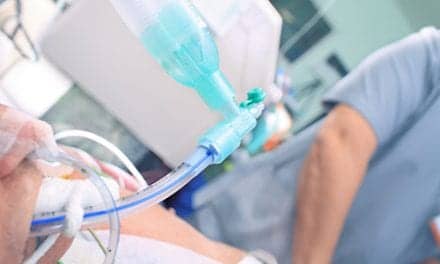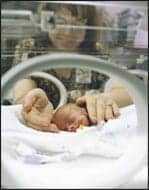Three ventilator weaning protocols are compared to determine which is most effective.
Over the past several years, there has been an increased demand for weaning the ventilator patient in a safe and cost-effective environment. With the fiscal restraints imposed by HMO guidelines and the increased cost of health care, more emphasis is being placed on creating a safe and effective way to wean patients from mechanical ventilation. I have taken three ventilator weaning protocols and compared them to see which protocol is the most effective approach.
Clinical Application
Weaning techniques differ considerably from one another. Standard protocols that were established at Spaulding Rehabilitation Hospital, Boston, in the early 1980s, involved certain weaning criteria, as well as the clinician’s attempt to allow the patient to perform as much of the breathing workload as tolerated.
All aspects of the physiological spectrum of the patients’ ventilatory and medical status should be considered. The criteria for ventilator weaning should include adequate ventilatory reserve, adequate gas exchange, reversal of pathology requiring mechanical ventilation, adequate cardiovascular reserve, no major organ system failure, normal fluid and electrolyte balance, appropriate nutritional status, tidal volume exhaled (Vte) 2-3 mL/kg ideal body weight or greater, spontaneous Vte 7-9 mL/kg, and normal respiratory rate (age appropriate).1
Assuming that all aspects of the above criteria are adequate, negative inspiratory pressure (NIP), positive expiratory pressure (PEP), and rapid shallow breathing index (RSBI) should be performed daily. If the NIP is < -20, the PEP is > +30 and the RSBI (respiratory rate divided by Vte) is under 100, we can determine that the patient’s muscle capacity and ventilatory reserve are appropriate for weaning from the mechanical ventilator.
All aspects of this protocol allow us to perform the first weaning maneuver. The ventilator rate is weaned to a level that allows for acceptable gas exchange at the alveolar level. If the patient shows no signs of respiratory distress and has adequate gas exchange, he or she is weaned to appropriate pressure support settings. If this maneuver is tolerated, with no existing signs of respiratory distress and an adequate gas exchange, the patient is placed on mist trials, beginning at 45-minute to 1-hour increments. The end tidal CO2 and saturation, with correlating blood gases, and assessment of respiratory distress and use of accessory muscles should be monitored at all times throughout the weaning process.
Weaning Continuum Model
The National Study Group sponsored by the American Association of Critical Care Nurses (AACN) proposed a model of mechanical ventilator weaning protocols. This model introduces three distinct time points: preweaning, weaning, and weaning outcome.
During the preweaning stage, active weaning is not performed. This stage emphasizes complications that may interfere with weaning. Decisions made during preweaning involve determining if the patient is ready to begin weaning, selecting an approach to weaning, and deciding on a mode of weaning.
During the weaning process, clinicians assess parameters, which include percent of ventilator-free time, percent of minute ventilation requirement supported by mechanical ventilation, myocardial function, oxygenation, nutrition, electrolytes, use of accessory muscles, ventilatory drive, and psychological status. Assessment of when to terminate the ventilator weaning process includes presence of dyspnea, rapid/shallow breathing, facial expression, accessory muscle use, and heart rate and blood pressure. The National Study Group indicated that it was difficult to find a consistent method of charting progress during the weaning process.2
The weaning outcome stage includes complete weaning and incomplete weaning. The criteria that must be met for complete weaning include: a complete weaning process, where patients spontaneously breathe on their own for 24-48 hours. During the complete weaning stage, the patient receives partial support, either at night or during the day, or the complete weaning stage is terminated and full ventilatory support is restored. At any point in the weaning stage, if the patient’s psychological status deteriorates, weaning is stopped and the preweaning stage is implemented. If the patient’s physiological status improves, the patient is advanced back to the weaning stage.2
Burns Weaning Assessment Program
A third, more impressive ventilator weaning protocol has been published, which is known as the Burns Weaning Assessment Program (BWAP).3 This protocol categorizes a general assessment, respiratory assessment, airway clearance, strength, endurance, and gas exchange checklist. It provides a numerical outcome.
| Patient Name_______________________ History Number__________ Weight_______kg
I. General Assessment …………….Not II. Respiratory Assessment Gas Flow and Work of Breathing Airway Clearance Strength Endurance ABGs Additional for Wean Index |
| Table 1. Burns Weaning Assessment Program (BWAP) (Burns, Fahey, Slack), Copyright Burns 1990. |
Each category includes a list of criteria that gathers a collective score. This score is based on a percentage of positive answers. The patient must have a total percentage score before the weaning process can be initiated.
- The first category is General Assessment that includes: hemodynamics (pulse rate and cardiac output); free factors that affect metabolic rate (seizures, temperature, sepsis, bacteremia); hematocrit, > 25%; systemically hydrated, adequate nutritional status; electrolytes within normal limits; pain control; adequate sleep/rest; appropriate level of anxiety; absence of bowel problems; adequate endurance/strength; and chest x-ray improvement.
- The second category is listed as Respiratory Assessment and includes: respiratory rate and pattern (assessed off the ventilator); absence of adventitious breath sounds; secretions (thin); absence of neuromuscular disease; absence of abdominal distention, tracheostomy, or endotracheal tube is 7.5 the size.
- The third category is airway clearance and evaluates the patient’s cough and swallow reflex.
- The fourth category measures muscular strength via NIP and PEP (< -20 and > +30).
- The fifth category measures endurance. The patient maintains Vte (>5 mL/kg) and vital capacity (> 10-15 mL/kg).
- The sixth category looks at the patient’s gas exchange status. It evaluates whether the pH = 7.30-7.45, Paco2 = approximately 40 mm Hg, and Pao2 = > 60 mm Hg, with FIO2 < .40.3
Conclusion
Weaning patients from mechanical ventilation continues to be a costly and time-expansive endeavor. Despite ventilator weaning protocols that have been published, the patient’s respiratory, cardiac, nutritional, physiological, and psychological status continues to play a major role in how well the protocol will work. The BWAP protocol is the most thorough system that has been published to date. It encompasses all aspects of the patient’s overall status and allows the clinician to accurately measure the patient’s medical situation, along with set parameters that the patient must achieve, before the weaning process can be instituted.
With the continual improvement in modes of mechanical ventilation, the process of weaning patients from mechanical ventilation should become less time intensive and decrease the expense of maintaining a mechanically ventilated patient. These factors, along with an accurate ventilator weaning protocol system, should allow us to wean patients off the mechanical ventilator in a safe and effective manner.
Mary P. Milliner, RRT, is senior therapist in the Respiratory Care Department at the Spaulding Rehabilitation Hospital in Boston.
References
1. Egan DF. Fundamentals of Respiratory Therapy. 3rd ed. St Louis: CV Mosby Co; 1973.
2. Knobel A. Weaning from mechanical ventilatory support: refinement of a model. Am J Crit Care Med. 1998;7:149-152.
3. Burns S. Burns Weaning Assessment Program (BWAP). Am J Crit Care Med. 1994; 3:12-13.









